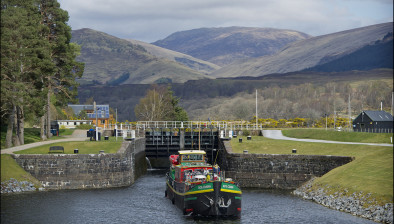Stephen Good: Building a zero-carbon construction sector - five areas to focus on in 2022
Stephen Good, CEO of the Construction Scotland Innovation Centre, looks ahead to some of the key themes expected to play a big role in the construction industry in 2022, with sustainability at the core.
Stephen Good
The Covid-19 pandemic aside, the theme that best characterised 2021 could arguably be sustainability. The need to tackle climate change through energy efficiency and reduced carbon emissions was one of the most prominent talking points of the year, culminating in the United Nations’ COP26 conference in Glasgow.
While there was inevitably political wrangling over the final content of the Glasgow Climate Pact, it has at the very least provided a direction of travel. The conference itself has also focussed minds on how individuals, businesses, sectors, and entire nations might play their part in the fight against the biggest challenge we’re likely to face.
The key will be to create a legacy from COP26, turning good intentions and pledges into concrete action – and 2022 has to be the year that happens. As one construction industry expert put it to me recently: it is too late for more trials and prototypes, we need to start seeing more mainstream, commercial-scale applications of low and zero-carbon construction processes and products.
We have the tools, know-how and expertise to make this happen – projects like NearHome, bringing workspaces closer to people’s homes, and the homegrown timber housing unit displayed at COP26 demonstrate that. However, all of this needs to be accelerated, scaled-up, and mainstreamed to transform the industry and get to where we need to be.
To make all of this happen in 2022, five themes will need to play out:
1. Focussing on procuring for value
Almost every aspect of sustainable construction can be supported by responsible procurement, whether it is through choosing materials that are low in embodied carbon or selecting contractors that are competent in meeting energy efficient approaches such as Passivhaus or EnerPhit. Ultimately, decision-makers need to start thinking about the overall value and long-term impact of the services and assets they are buying, not just the lowest up-front cost. We need to see meaningful progress on this front during the next 12 months.
2. More holistic policy
The Scottish Government has developed a number of key policy and regulatory guides. Whether it is Housing to 2040, or The Heat in Buildings Strategy, or changes due to come into effect in 2022 regarding Section 6 Energy within the Building Standards, they all address critical aspects of the built environment’s journey to net zero. There are some areas where comprehensive policy is still a work in progress though, particularly around retrofit and embodied carbon for example. Developing robust and more holistic policy frameworks that are effective across the entire built environment ecosystem, joining up policy objectives across multiple portfolios is a potential big win for 2022 and would set the construction sector on a trajectory that’s clear, encouraging industry buy-in and investment in capability building.
3. A focus on green skills
We have a big challenge ahead of us to develop a workforce that can meet the requirements of a zero-carbon built environment. There is no easy fix – the entire system needs rewired from top to bottom to deliver the scale of green skills capabilities required. This includes everyone in the skills ecosystem: from schools, colleges and universities to every size of business taking on new apprentices or re-skilling and upskilling the current workforce. The sector can build on the momentum of some of the initiatives seen this year and take that into 2022, and every organisation has a key role to play in collaborating effectively to deliver impact at scale and at pace.
4. More local supply chains
The challenges around the availability and price of materials look set to continue into the new year. In addition, the Brexit-driven demise of CE marking for safety, health and environmental protection, due to be replaced by an alternative UKCA marking process at the end of 2022 provides further uncertainty. For Scotland and the rest of the UK, it highlights the opportunity and need for local supply chains and the greater use of sustainable and regenerative materials, such as homegrown timber. That said, there is still some way to go before the demand for new and innovative materials drives the level of change we will need to see. With a focus on scaling up, this critical part of the industry could stand to grow significantly.
5. Developments in modern methods of construction
Digital transformation has been on the agenda for a while now, but in 2022 we could see a renewed focus on modern methods of construction, particularly advanced offsite manufacturing, ahead of the zero-emissions heat standard for new buildings coming into effect in 2024. This was just one of the core aims of the Scottish Government’s Housing to 2040 strategy, and we expect to see details laid out for the offsite sector in a national Net Zero Offsite strategy for affordable homes in early 2022.
















